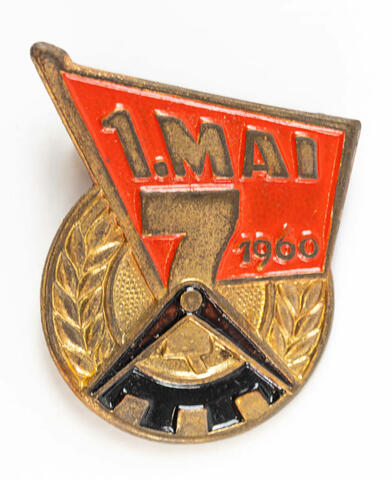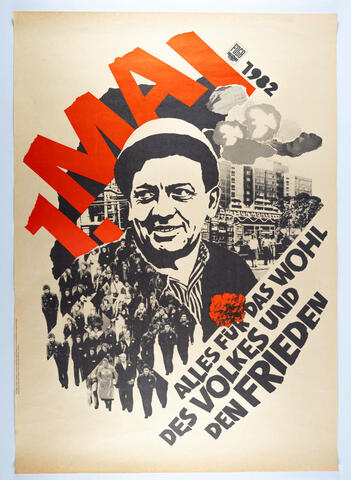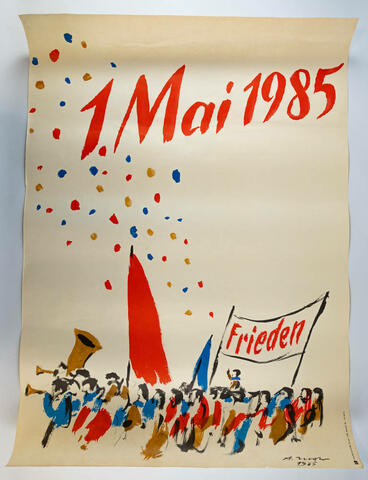GDR history
1 May as a »Day of Combat and Celebration« in the GDR
Along with 7 October, the founding day of the German Democratic Republic, 1 May was – at least for the political leadership – probably the most important and elaborate holiday between 1949 and 1989. Participation was an unofficial duty for every citizen. This day was celebrated as the »International Workers' Day of Combat and Celebration for Peace and Socialism« and referred to the traditions of the international workers' movement. Already during the Weimar Republic and the National Socialist era, 1 May was celebrated as a »national labour holiday«. In the GDR, the right to work, a job, its free choice and the right to wages according to the quality and quantity of work were anchored in the Basic Law as socio-economic rights.
The complex organisation of the celebrations, which included military marches, sporting and musical performances, a popular parade and the so-called »May Day speeches« by the heads of state, was intended to fulfil several functions.
May Day to honour the working population of the GDR
Initially, the SED, as the leading party of the workers' and peasants' state, wanted to suggest an honouring of the working population. Thus, this occasion was used to confer a large number of state and company awards: Workers' collectives in state-owned enterprises were honoured with the title »Collective of Socialist Work« in order to highlight jointly achieved production successes in the enterprises. The constant increase in economic progress was thus the focus of the celebrations, especially in order to be able to hold one's own on the international economic stage.
In addition, as part of the May Day celebrations, the SED strove to show presence and closeness to the electorate. On 1 May 1951, Schlossplatz, recently renamed Marx-Engels-Platz, was made the central rallying point in Berlin. The party and state leadership took their seats on a tribune from which they could wave to passers-by of various ages. Red main carnations and waving elements were part of the street scene of the May Day demonstrations.

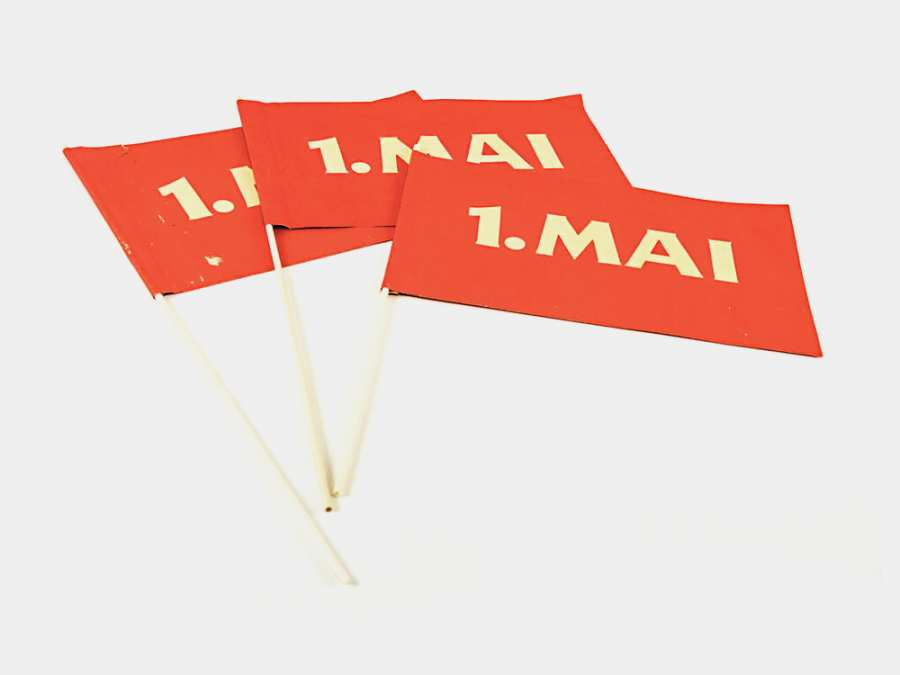
1 May as an unofficial compulsory event for everyone
Participation was also compulsory for schoolchildren: dressed in FDJ and Pioneer clothing, they held up posters, banners and portraits of important GDR politicians and paraded past the VIP tribune. The slogans on the banners were also centrally prescribed and were published a few days before 1 May in the newspaper »Neues Deutschland«, the central press organ of the SED. The poster from our collection with the slogan »Together we strengthen peace« is from 1973 and was printed by the Deutsche Werbe- und Anzeigengesellschaft (DEWAG), an organisation-owned company of the SED.
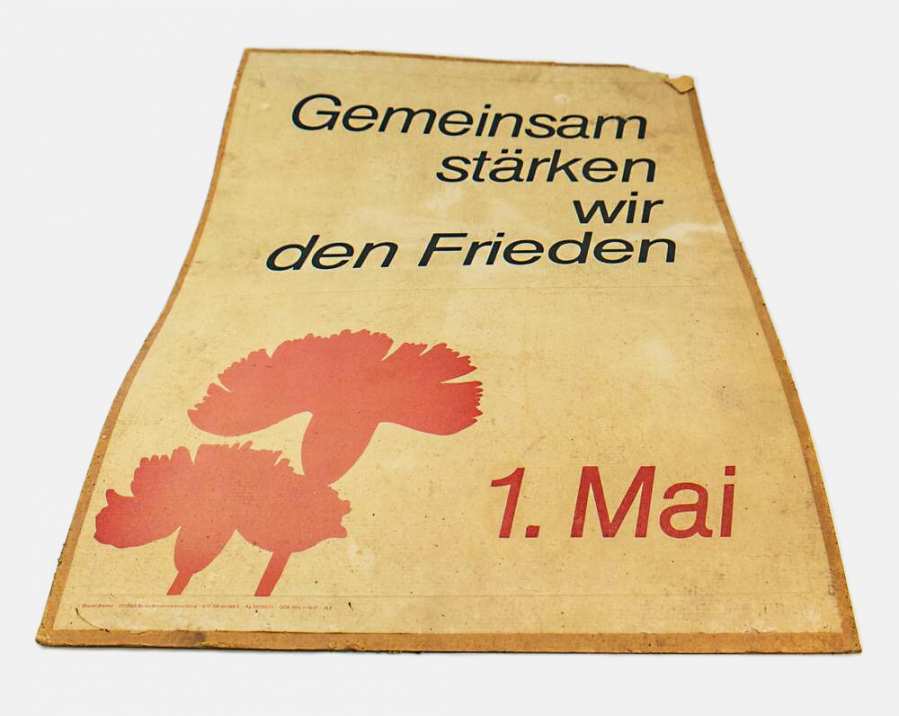
Between 1956 and 1976, the celebrations opened with a Soviet-style military parade, with units of the NVA marching at the head of the procession. As it became increasingly difficult over the years to motivate GDR citizens to take part in the May Day demonstrations, this once solemn day of celebration with a political-serious character increasingly resembled a public festival with food stalls and fairground rides.
Editor's note: The blog article first appeared on 30 April 2015.

